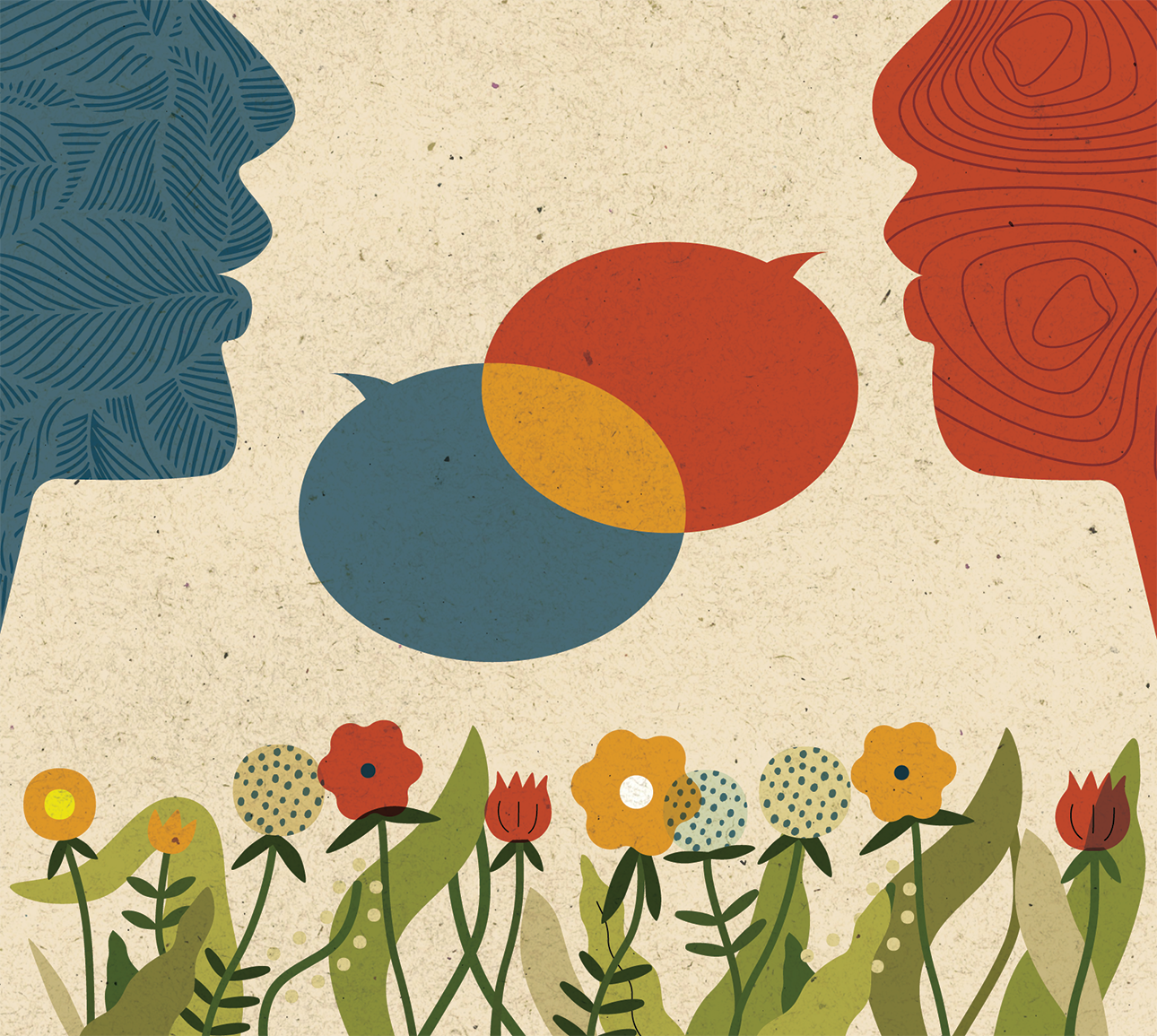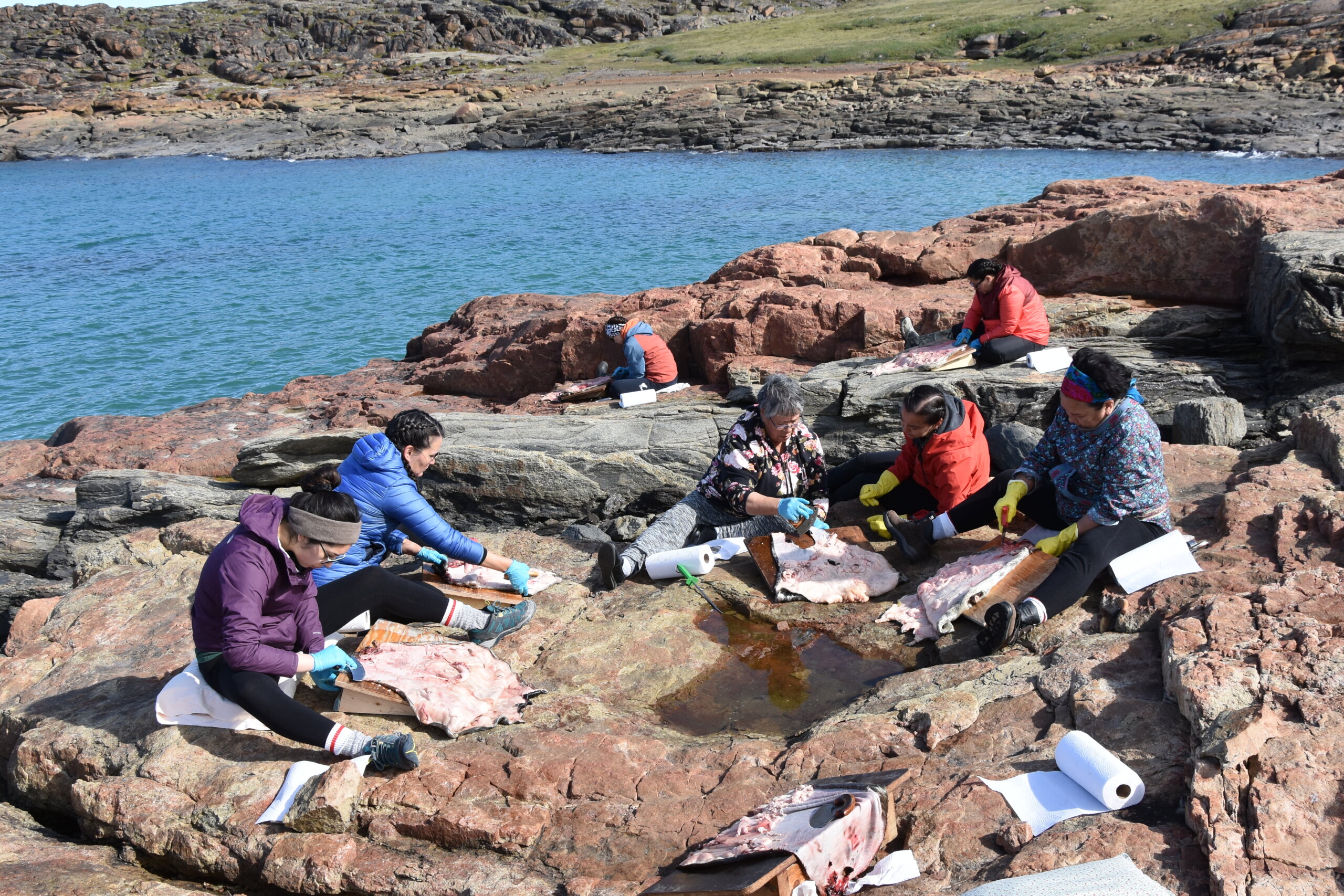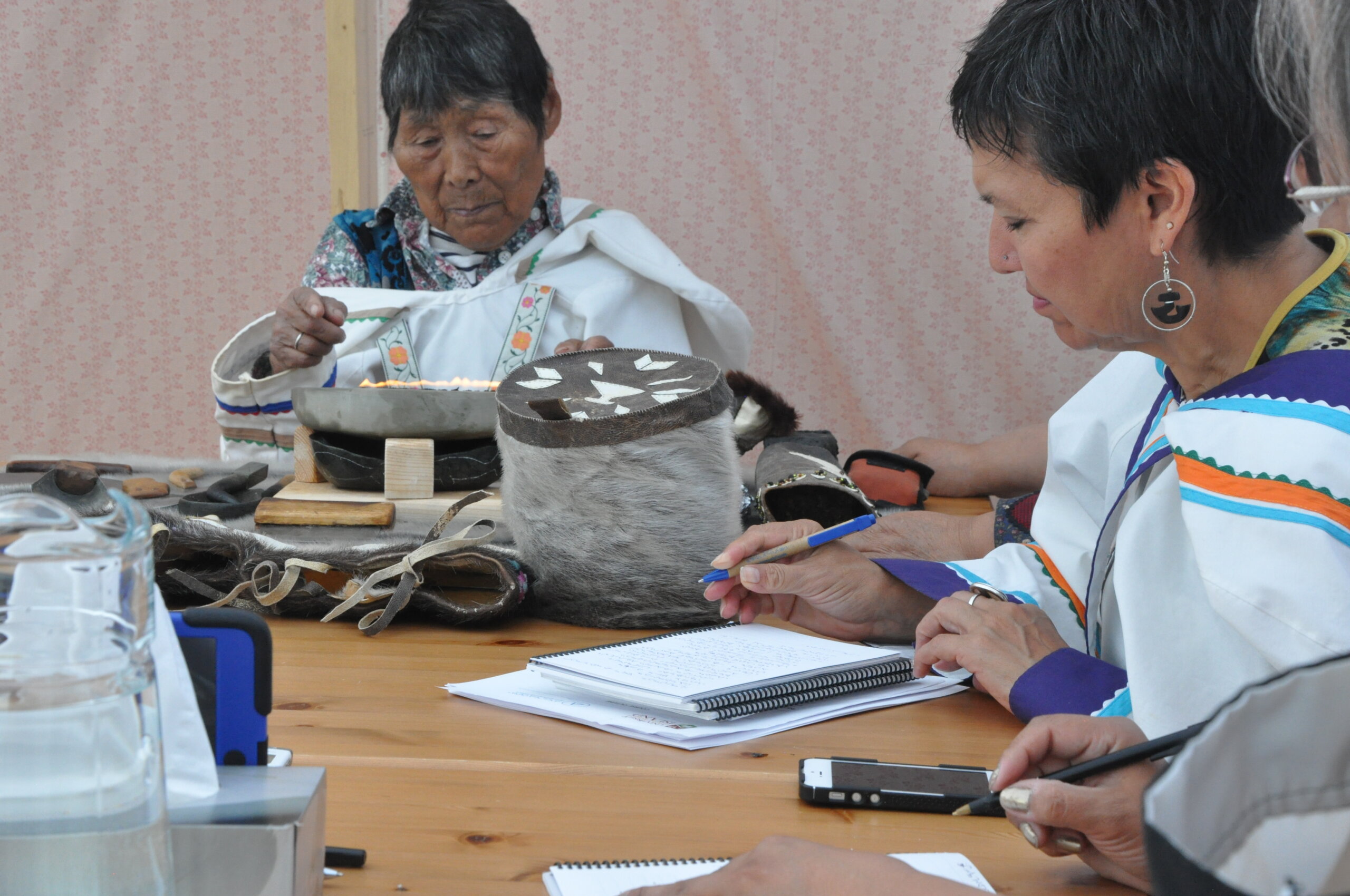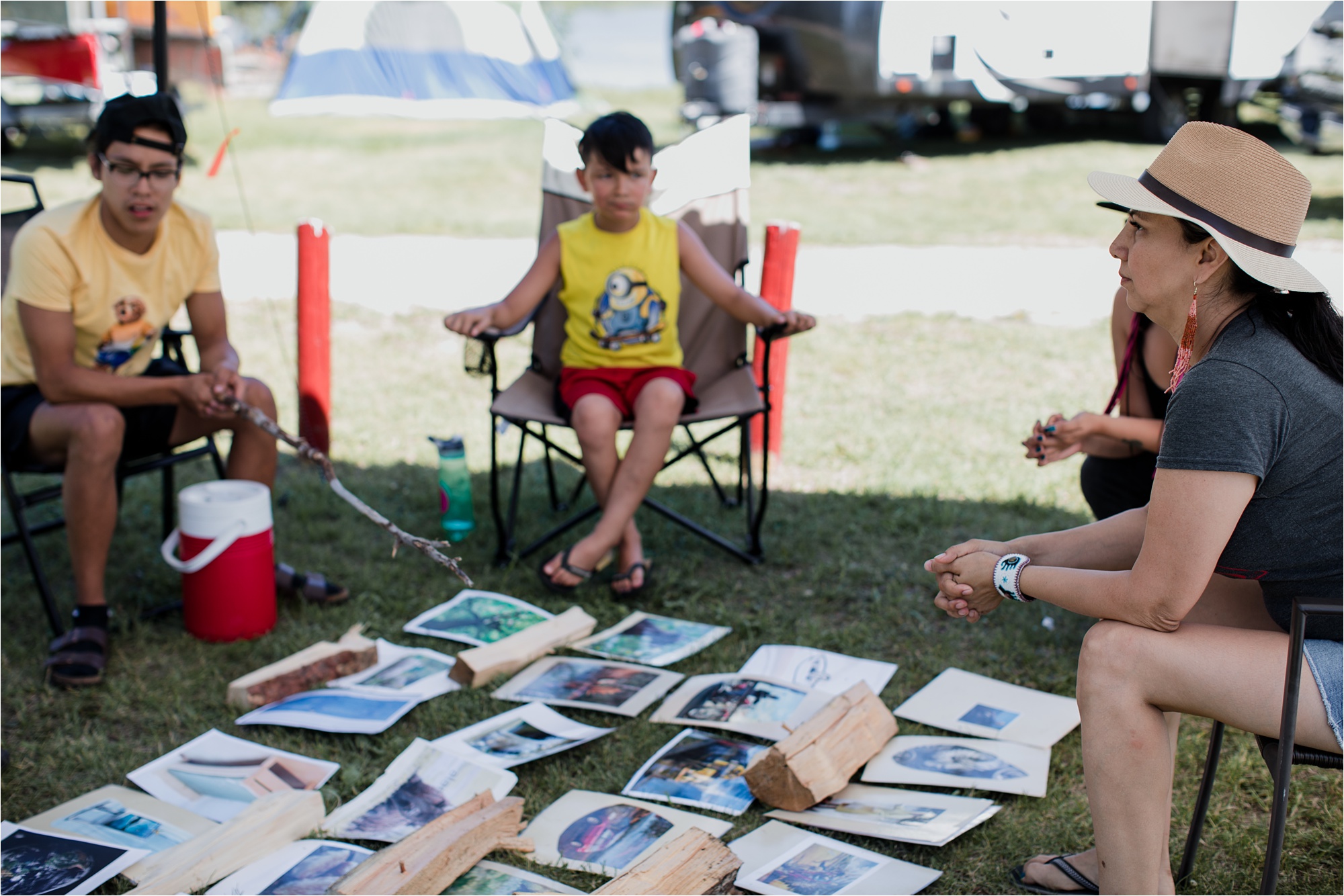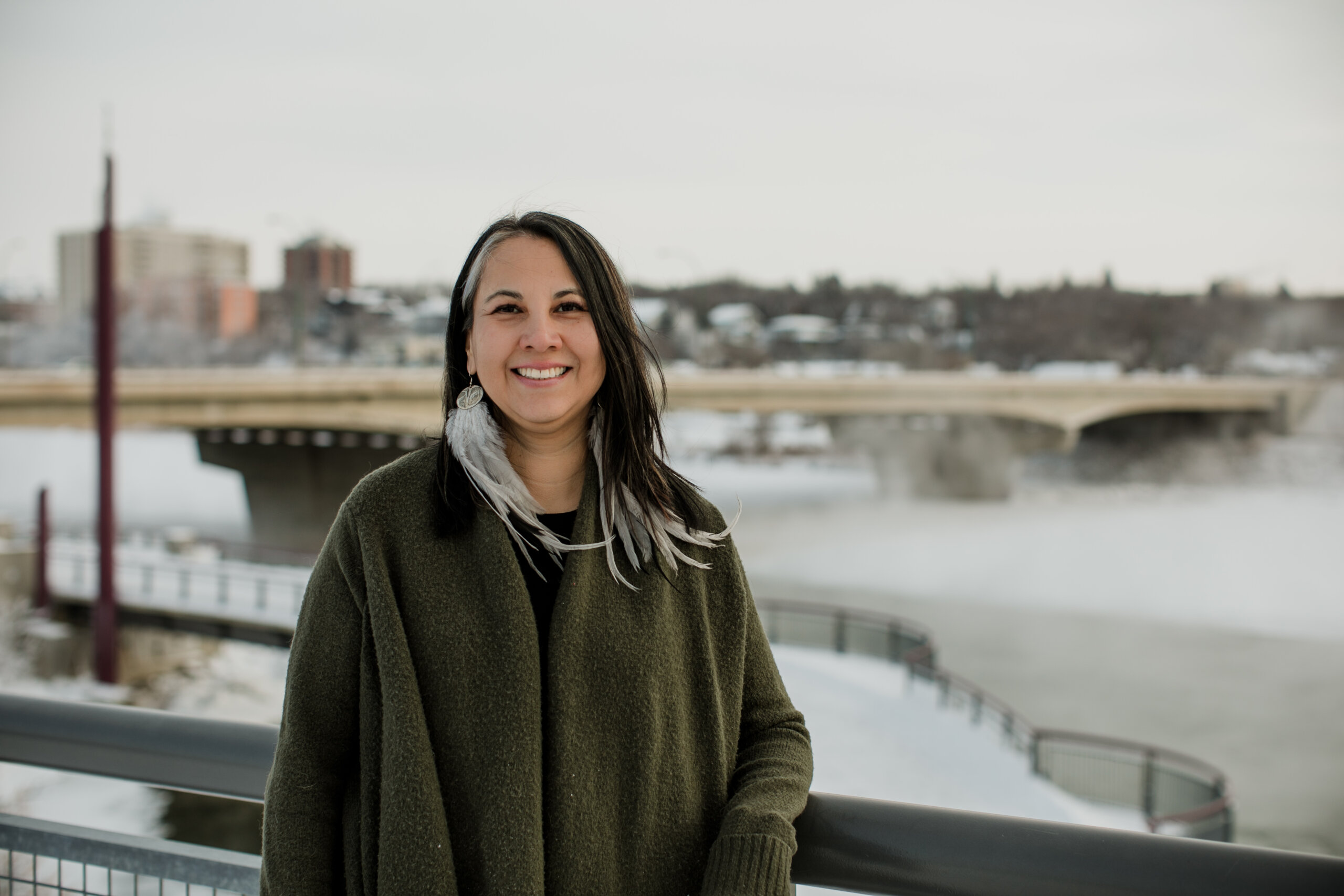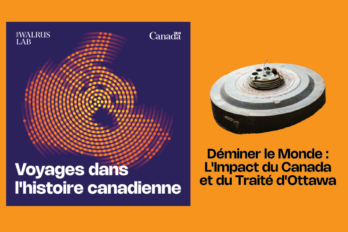Growing up in the community of pakitahwākan sākahikan, Sturgeon Lake First Nation in Saskatchewan, Belinda kakiyosēw Daniels was surrounded by the nēhiyawēwin (Cree) language. Even though she did not learn to speak it until her twenties, listening to it from birth would be critical to that process. Being immersed in the sounds, and intonation, would become “a stepping stone to reclamation.”
As Daniels, who is now an assistant professor of Indigenous language revitalization at the University of Victoria, went through her undergraduate degree, she began a journey into her own language, culture, and even family identity. She and her nohkom (grandmother) sat and re-immersed themselves in nēhiyawēwin together, as Daniels took in the words and concepts as an adult learner.
“This was healing not only for me,” says Daniels, “but healing for my grandma/nohkompan because we were decolonizing together through language reclamation.”
To help others in their own journeys, Daniels started running land-based immersion camps twenty years ago through her non-profit organization nēhiyawak Language Experience. She emphasizes that learning nēhiyawēwin imparts a “land gaze perspective,” wherein nature is alive with spirit and feeling.
This perspective brings a responsibility to the earth which is encoded in many Indigenous languages around the world. Increasingly, researchers and organizations are learning what Indigenous communities have always known: caring for the land is a cultural value woven into words themselves.
Protecting linguistic diversity and biodiversity are parallel processes. When a language disappears, Daniels says, “what is lost is a distinct relationship that a group of people had to land and biodiversity….Nature-bound livelihoods and nature-bound responsibilities are also lost.”
Twin crises: Linguistic
and natural diversity
Of the approximately 6,700 languages worldwide, 40 percent are at risk of going dormant—over half of those are Indigenous. This trend is echoed in Canada, where the United Nations Educational, Scientific and Cultural Organization (UNESCO) has designated all of the country’s over seventy Indigenous languages as at risk.
Even though the threats to Indigenous languages in Canada might feel daunting, groups and individuals are working to reclaim, revitalize, and maintain both the languages and the deep cultural knowledge contained within them. To further these efforts, the period from 2022 to 2032 has been declared the United Nations International Decade of Indigenous Languages. This urgent call raises awareness of the importance of Indigenous languages, and encourages individuals, communities, and all levels of government to act.
Regional initiatives will be critical in the next decade. For example, the Canadian Commission for UNESCO (CCUNESCO) has assembled a working group of First Nations, Métis, and Inuit individuals, with expertise in language revitalization, to advance the goals of the decade within Canada. The group, to which Daniels contributes as a member, is aware that biodiversity statistics often mirror those of Indigenous languages.
Globally, the UN states that biodiversity is declining faster than any other time in human history, with almost a quarter of earth’s species facing extinction. In Canada, 841 species are deemed at risk.
Biodiversity loss poses an existential threat to humans: food security, medicine, and water hang in the balance. However, studies show that when Indigenous communities steward lands and waters, biodiversity thrives.
Learning the land through language
“Boozhoo Nindinawemaaganag, Memashkawigaabaw Indigoo, Nigigoonsiminikaaning Nindoonjii, Bizhiw nindoodem.” This is how Ojibwe educator Jason Jones introduces himself, as so much is lost when a name (Memashkawigaabaw is the spirit he was named after), community (Nigigoonsiminikaaning First Nation), and clan (Bizhiw) are translated into English.
Even something so seemingly simple as his greeting, ndinawemaaganag, has important nuances. Jones translates this as “my relatives,” and it is a reminder that we are all related. The word contains a world where the land, people, and animals are alive and connected.
![]()
Of the world’s approximately 6,700 languages, at least 40 percent are in danger of going dormant—over half of these are Indigenous
![]()
The International Decade of Indigenous Languages was declared by the United Nations to draw attention to the linguistic crisis and present a Global Action Plan. UNESCO is the lead agency for its implementation
![]()
The Canadian Commission for UNESCO (CCUNESCO) advocates for language revitalization and maintenance through its eighteen member working group.
![]()
Currently there are two National Action Plans in Canada for the Decade: one by the Assembly of First Nations and one by the Government of Canada
![]()
Canada’s 2021 census showed that 13.1 percent of the Indigenous population can speak an Indigenous language well enough to conduct a conversation: this number has been declining since 2006, when it was 21.4 percent
![]()
Meanwhile, the number of Indigenous individuals who learn their language as a second language is rising: in 2021, it was over a quarter
![]()
Languages are also reawakening across the country; the Qualicum First Nation’s pentl’ach language was deemed dormant in the 1940s, but was reclassified in 2023.
Jones has worked with the UNESCO World Heritage Site Pimachiowin Aki, which is part of the largest stretch of intact boreal forest left on earth. The site has been cared for by Anishinaabeg for over 7,000 years, and their tradition of Ji-ganawendamang Gidakiiminaan (Keeping the Land) has a dramatic impact on biodiversity there. Though woodland caribou and the Canadian warbler are both considered threatened, in Pimachiowin Aki, they thrive.
“I think back to when an Elder talked about the wolves almost going extinct,” says Jones. “This happened at the same time residential schools were going on. The Elder said, ‘if you want to know the state of Anishinaabe people, just look to see how the wolves are doing. If they’re not doing well, we’re not doing well.’”
According to Jones, the wolf population rebounded in the 1990s. The last residential school closed in 1996, and a number of survivors and descendents began recounting the truth. Interest in revitalizing languages was growing, and “our healing journey started.…Once we get our language back, our brains will change and we’ll be more aware of our surroundings. The language makes you think differently, more positively.”
Coping with change
As a first language Inuktut speaker living in Iqaluit, Nunavut, Leena Evic knows how critical language is to Inuit knowledge of how to live on the land.
“But for those of us who departed from our families to attend Western schooling under the colonial system that prohibited us to express in our Indigenous language, we were denied from also gaining our Indigenous knowledge and skill,” Evic says. “As a result, we Inuit today are craving to restore and reclaim part of us that makes us whole.”
With a dream of restoring the deep and essential knowledge contained in Inuktut, Evic founded the Pirurvik Centre in 2004. The centre offers both land-based and classroom programs, including Inuktut first and second language learning, opportunities for non-Inuit people, and credentialing to teach the next generation of Inuit.
Along with the cultural fluctuations, Evic is also watching nature transform as snow melts, sea levels, and temperatures vary unpredictably. She’s seen geese come with nowhere to land or feed, and is worried for the caribou herds. Climate change is impacting her peoples’ wellbeing.
Evic is also a member of CCUNESCO’s working group, and says, “Inuit have survived hundreds and thousands of decades in the harshest environment on this planet because of their intricate knowledge and respectful relationship with their natural world. Their language articulates some of the highest levels of ecological and biodiversity knowledge.”
Evic shares that for Inuit, “ᓯᓚ ᐊᖏᔪᖅᑳᖑᒻᒪ [sila] is our authority, sila is the boss. In Inuktut, sila is everything around, below, and above us. It’s the weather, the skies, the environment, the ecological cycle of the natural world”; Inuktut carries not just a responsibility to protect nature, but also an intricate system for observing and responding to the environment.
While there is no simple answer for how to revitalize languages or protect biodiversity, Jones shares how the Ojibwe language inspires a path forward.
“The word for carbon dioxide is mitigoo inaamowin. Mitig means tree, ‘oo’ connects it with the next word. Inaamowin—the thing we breathe in. ‘The thing that trees breathe in,’ is the translation. When we exhale it, the trees breathe it in. We need each other, that’s what it’s trying to show us. The language will open our minds more, reinforcing our connection to the land.”
Visit ccunesco.ca For More Information

